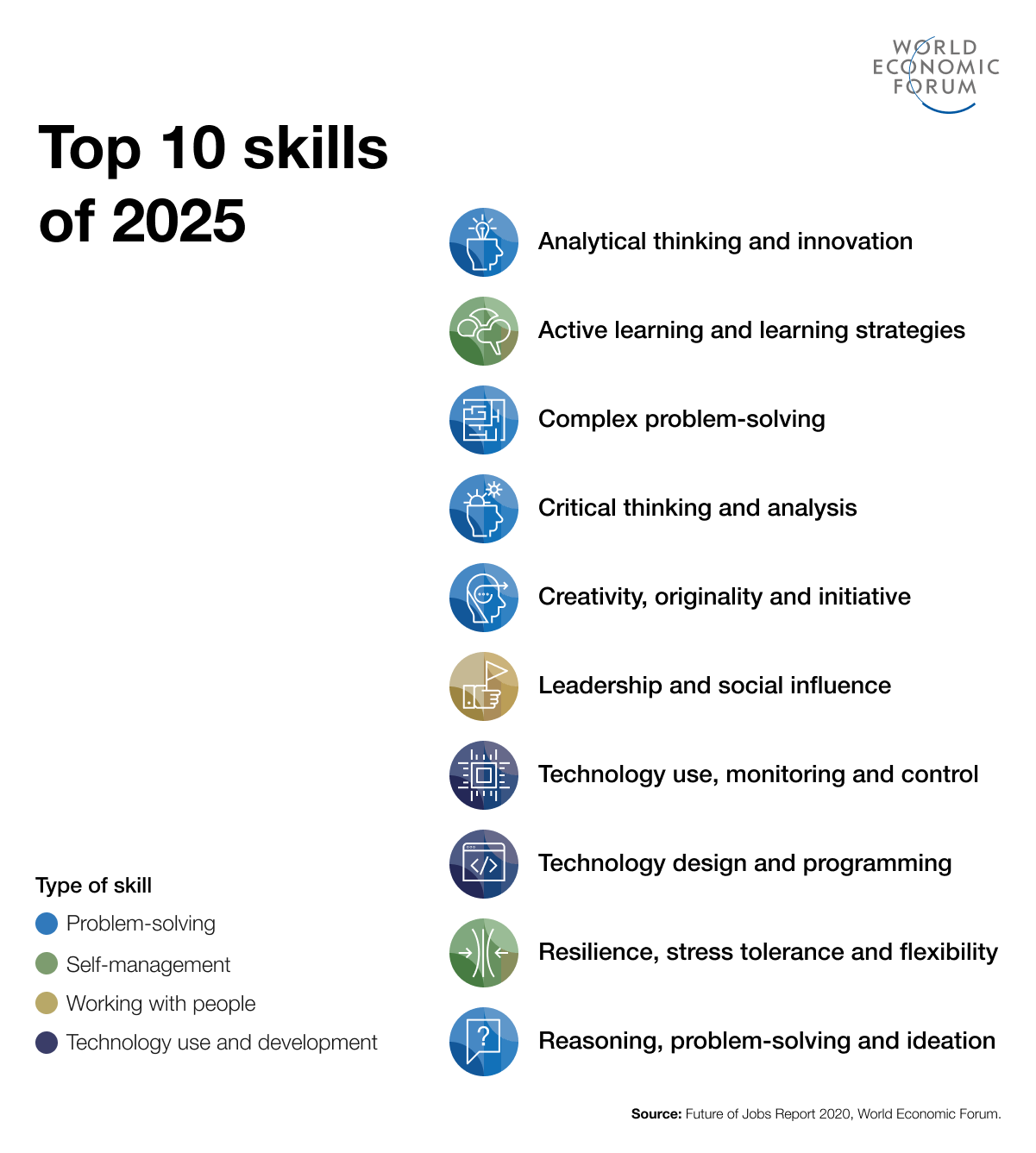Employers, beware: the world is changing and you need to as well. Many organisations intrinsically understand the need for change but often times, this shift is rarely communicated well within organisations. As a result, you have an ever-expanding divide between what senior management thinks needs to happen in order for the business to survive and thrive, and what employees on the ground think will eventually materialise.
We also understand the impact AI and ChatGPT could potentially have in our industries but rarely is the case that we see organisations put together a true blue print of how the business needs to fundamentally shift in order to remain relevant. At the end of that conversation is often the concept of reskilling for the future needs of the business.
Learning and development (L&D) has already gone through multiple iterations especially during COVID19 and post pandemic. One quick observation was the pivot that organisations took to move learning online but without understanding the impact online learning would have on learning engagement and retention. The move was to effectively carry on as usual albeit using a different format.
Looking forward into the future, understanding the needs of the organisation, its current and future needs, will be necessary to stay ahead of the rapidly changing business environments. L&D needs an overhaul and organisations who see this change early can really benefit and create a platform for future growth and market reach.
In this article, we examine 4 L&D global trends and how these can be incorporated into the local Malaysian context so that businesses can learn from best practices and put them directly into practice.
4 L&D Global Trends
Remote learning and development
There is nothing new about remote learning and all of us have experienced it in one shape or form during the pandemic. The shift from classroom to online classrooms happened pretty instantaneously as organisations needed to engage employees and the fastest way to do that was remotely. The challenge with this shift was that the central element of learning was ignored: engagement.
Ignoring the participant or the learner was a sure fire way to get a demotivated and disengaged bunch of folks. Organisations need to adopt new technology that can complement the learning experience. One example would be integrating virtual or augmented reality in the learning experience. Hour One is an example of a how organisations can use AI presenters to engage participants and to make the learning process a lot more enjoyable.
Another great example is functional training where the material can be very dense. Using avatar-based solutions can pull participants into the learning experience and rather than learning by listening, you shift the focus to learning by doing. In a classroom, you can replicate that when the presenter engages a specific person in role play but doing this at scale can present a challenge.

Focus on Soft (Power) Skills
Soft skills such as communication, problem-solving, and adaptability are increasingly seen as essential for success in the workplace. In fact, a report by the World Economic Forum identified complex problem-solving, critical thinking, and creativity as the top three skills needed for the workforce of the future. Employers need to prioritize soft skills development in their training programs to ensure that their employees are well-rounded and adaptable. Transferable power skills allow employees to understand the shifting changes in their industry and to adapt accordingly.
Having a solid foundation in technical knowledge should always be the base of any employee’s career but employers need to acknowledge that it is power skills that allow the organisation to push forward. If you refer to the below graphic from the World Economic Forum, pretty much all of them are power skills. Only 2 of the 10 skills are rooted in functional knowledge (technology use, design and programming). A greater adoption of technology in every sector is pushing the boundaries of in-demand skills and the skill gap is continuing to grow larger every year.
Organisations that have a clear L&D direction to address these gaps will need power skills to be at the core of their strategy. It’s no longer a nice to have, but a must have.

Emphasis on Continuous Learning
The pace of technological change means that employees need to be continuously learning to keep up with the latest developments. A report by the World Economic Forum predicts that by 2025, 50% of all employees will need reskilling. That’s just 2 years away. More worryingly, we know from Malaysian data, only 10% of our workforce is getting some form of learning and development. Therefore, we are already behind the curve of what the global expectations are.
Employers need to adopt a culture of continuous learning and provide their employees with ongoing training opportunities. An inbuilt learning system can be the way forward where employees have certain learning options that are always available and ready to be consumed. These can come in the form of LinkedIn Learning, Udemy or Skillshare. These platforms offer content and provide a quick solution to the challenge of content creation. Some content creators have bridged the gap of just providing content but also providing a social component to their learning.
For example, content creators create Discord or Facebook groups where participants can share and collaborate on their learning journeys. Since the beginning of the pandemic, LinkedIn has seen a 1,100% increase in people joining Learning Groups and a 225% increase in courses shared with a learner’s professional network. They’ve also seen a 121% increase in course Q&A participation.
Enabling a culture of continuous learning is going to be necessary so that employers and employees alike have an avenue for learning whenever required. Learning needs to be an employee’s right; not a privilege.
Gamification and Microlearning
Gamification and microlearning are two trends that are gaining traction in the world of learning and development. Gamification involves using game elements such as points, badges, and leader boards to make learning more engaging and fun.
Microlearning involves breaking down training into bite-sized chunks that are easier to digest and retain. A report by Training Magazine found that 80% of learners said they would be more productive if their training was more game-like, while a study by Bersin by Deloitte found that employees only have an average of 24 minutes a week to devote to learning. Employers should consider incorporating these trends into their learning and development strategies to improve engagement and retention.
Simulations for learning have been around for a long time and currently there are games or simulations that can address multiple skill areas from functional to non-functional learning. Aviation was really at the forefront of this when they launched flight simulators to teach pilots real life troubleshooting. Today, flight simulators are a mandatory component of a pilot’s training and development. The reason is that games or simulations have the potential to generate real life results immediately vs a classroom-based approach.
If you’re looking to improve your leadership skills, why not engage in a simulation that gives you results instantaneously so that you learn as you engage in the simulation. With inbuilt gamification concepts, learners often feel more engaged through the process and as a consequence, learning is improved and more importantly, retained.

Conclusion
As we evolve and adapt to the ever-changing landscape of business, so too do we need to adapt our learning curricula within organisations. Reading through the World Economic Forum’s future of work 2022, 3 main trends come to light:
- The pace of technological adoption is accelerating causing job displacements.
- Automation, in tandem with the COVID-19 recession is creating a “double-disruption” scenario for workers.
- The window of opportunity to reskill and upskill workers has become shorter in the newly constrained labour market.
All of these key points favour a drastic shift towards a stronger adoption of learning and development in organisations. The faster the adoption, the quicker we can address the skill gap and ensure that employees are not left in the wind to fend off industry related changes. We need to adopt and learn from global L&D trends to ensure we are learning and putting into place the best formats to keep L&D engaging.


Great insights. I learn a lot from bite size learnings via Instagram and TIkTok too. Perhaps that’s how future of learning should be.